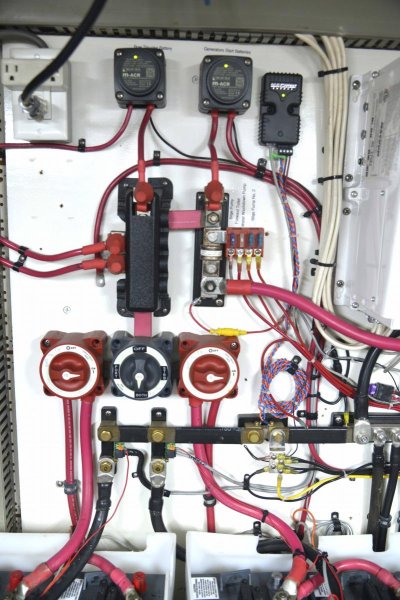catalinajack
Guru
This is the breaker (Square D) on the feed from my 7.7kw Westerbeke. Yesterday, this breaker tripped twice with modest loads and was very hot to the touch. I opened the box this morning and could see nothing obviously wrong except the green line in from the generator is butt-spliced twice. The engine room was very hot but this is nothing new.
My thinking, my knowledge is very limited in this regard, is that the breaker has developed a high internal resistance over time. Am I on the right track or should I be looking elsewhere? We have used this generator extensively over the past two years but I have to admit that I never once felt the breaker box for heat so that this condition may have existed for a long time and is just now becoming acute.
My thinking, my knowledge is very limited in this regard, is that the breaker has developed a high internal resistance over time. Am I on the right track or should I be looking elsewhere? We have used this generator extensively over the past two years but I have to admit that I never once felt the breaker box for heat so that this condition may have existed for a long time and is just now becoming acute.



